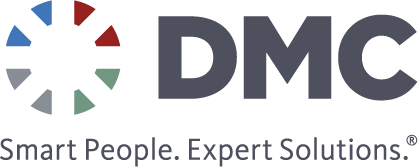The DMC LabVIEW Software Framework
DMC employs a powerful and proven software framework in LabVIEW to accelerate the development cycle of testing platforms. This collection of code is called the DMC Flex Framework or simply the Flex Framework. The Flex Framework was created by DMC teams who collected best practices associated with code reuse, and who identified common themes running through past DMC projects. These thoughts were collected and refined into a scalable architecture, the Flex Framework.

Ready to start your next project?
What is Flex Framework?

The Flex Framework is an extensible, reusable code base which underpins many of DMC Test and Measurement’s solutions.
Code modules within the Flex Framework architecture represent nicely packaged fundamental building blocks ready to be brought into new projects.
Examples of a handful of these modules:
- Digital Multimeters
- Graphing and UI Displays
- DAQmx Cards
- XNET/CAN Cards
- Reporting / Database Logging
The Flex Framework provides a tested and proven starting point for projects eliminating the development time it would take to build up these capabilities from scratch. Furthermore, it establishes a modular design pattern which enables developers to adapt and expand the Flex Framework to client requirements.
Advantages of the Flex Framework
Cost Savings/Added Value (ROI) through Re-Use
Significant investment in initial development and planned, smart code re-use enables DMC to provide accelerated development cycles and lower cost solutions than would otherwise be possible while focusing on developing application specific code.
Extensible
Proven, scalable, LabVIEW object-oriented architecture is the basis for DMC’s Flex Framework allowing for our engineers or clients to add pieces/functionality to an application while keeping the overarching application architecture stable and functional. DMC commonly provides license-free source code on delivered projects, allowing for customer engineers to modify or extend the code.
Standardized User Experience
Users/Clients can choose to utilize the same UI component pieces and provide a standard user experience when moving from one system to another when each system is based on the Flex Framework.
Vetted Code Base
We utilize the DMC Flex Framework in many DMC projects and have thousands of hours of operating time, enabling for a stable and tested software platform.
Open Platform
The Flex Framework is written entirely in LabVIEW. DMC can fully adapt the Flex Framework to meet customer needs and can provide the source code to the customer after a project is complete. Customer developers can enhance their applications over time through clear “hooks” and planned points of extensibility.
Standout Code Features
Alarm Handling
- Provides traceability for system faults and notifications
- Allows for system recovery from faults or errors
- Enables users to investigate notifications and clear fault

User-Defined Access Levels
- Easy to integrate toolset which keeps track of user permission levels
- Simple to extend and tailor to customer’s user role definitions

Data Logging/Reporting Capabilities
- Flexible logging utility
- Provides live feedback of user-configured, graded, testing parameters

Manual/Automatic Control Modes
- Automated running of pre-configured testing routines (commonly used in production environments)
- Manual testing support for in-depth engineering diagnostics (often used in R&D environments)

Tailored User Workflows
Application-specific interfaces and implementations to tailor the Flex Framework to meet exact customer needs.

Test Execution with the DMCquencer and Sequence Editor
- LabVIEW Test Execution Engine
Built-In Diagnostics
- I/O Checkout Routines
- System self-diagnostic check
- Diagnostic Logging
Configuration Management with Workspaces and DUT Construct
Single click switching of Device Under Test (DUT)-specific configurations.

Additional Information
DMC is proud to be recognized as a National Instruments Alliance Partner. Learn more about DMC’s National Instruments partnership.



